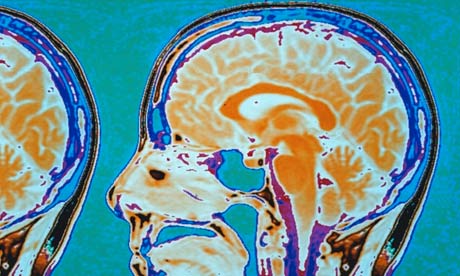
In 1984, after an unexplained fall, I woke up in a hospital in Rome acutely head-injured and disoriented. "I'm afraid you've had an emergency brain operation." A blurred but familiar face came into focus as the English girl who shared my flat; she had found me on the floor with my breathing irregular and speech garbled (in neurological terms, "aphasic"). In Hitchcock manner the phone was dangling off the hook; handprints of blood covered the walls where I had tried to steady myself. The police suspected an intruder. I had been on the phone to the Italian novelist Italo Calvino, whom I hoped to interview. Later, Calvino told me he heard "un tonfo" (a thud) before the line went dead.
Surgery for the resultant haematoma – a swelling composed of blood effused into the connective tissues of the brain – left me with a cranial cavity the size of a healthy tangerine. Professore Milza (Prof Spleen) who performed the operation told me: "You are missing some bone and therefore less thick-skulled than before." He suggested a silver plate to protect my neural hardware but, for fear of picking up radio signals, I opted for an acrylic one.
The accident left me with no permanent side-effects apart from one: my Italian became unaccountably fluent. Prior to the injury I had been taking lessons, but that hardly accounted for my sudden facility in a language I had spoken poorly. The change happened more or less overnight.
VS Ramachandran, a neuroscientist based in California, writes engagingly on the fevers, frets and disorders that afflict our most precious and elusive organ. Phantoms in the Brain, his 1998 bestseller, offered an Oliver Sacks-like inquiry into the bizarre ways in which the brain "remaps" itself following trauma. After the loss of his right arm in 1797 Lord Nelson felt non-existent fingers digging into his non-existent palm. In scientific terms, the sea lord's neural connections were trying to make sense of the pain of the amputation, but the wiring had gone awry.
Ramchandran's latest book amplifies on Nelson's phantom limb, and asks if brain damage can unleash a latent gift for language or art. A patient of his in San Francisco started to create hauntingly lovely paintings post-surgery; another began to speak in disjointed if poetic metaphors. Rather than dismiss such neural dysfunctions, Ramachandran believes they provide valuable insight into how the human brain functions. In addition to quirks of speech, he looks at such disorders as alien-hand syndrome, where the actions of one hand appear to act independently of the patient's will. (The left hand may close a drawer as soon as the right hand has opened it, or undo buttons that have just been done up.) The hand seems to have a "mind of its own". How?
Scientists have learned a good deal about brain trauma and the laws of mental life since the advent of computer-imaging in the early 1990s. Magnetic resonance imaging enables snapshot slices of the brain at work to be taken as a patient lies inside a giant space-age capsule. While Ramachandran makes professional use of neuro-imaging, his approach to mind science is otherwise confessedly "low-tech". He has pioneered the use of household mirrors in the rehabilitation of phantom limb patients, and elsewhere uses a mixture of deduction and native intuition in his quest to crack the brain's neural code.
Much of this book is taken up with anosognosia. From the Greek, "denial of illness", it is the inability to perceive that a part of one's own body is paralysed. Following brain-head injury, patients may vehemently claim they can walk and feel distressed by questions asked about their physical abilities. (President Woodrow Wilson insisted that he was "perfectly fine" after a stroke had paralysed his left side in 1919.) In extreme cases, patients may even attribute the paralysed side to another person – "It's my brother's", "It's yours" – but in all other respects appear quite lucid. Pyschomotor deficits of this sort can be very frightening for the patient, says Ramachandran, yet they tell us something important about damage done to the brain's connectivity maps and the remapping process.
Severe head injury can result in coma, when the patient's sleep-wake cycle ceases, and all mental function is lost. According to my neurosurgeon in Rome, the injury I sustained in 1984 had been a "very close brush with mortality". More than 40% of those who suffer acute epidural haematoma die as a result. In March 2009, the British actor Natasha Richardson died of just such a trauma after a fall while skiing. The Tell-Tale Brain, with its absorbing puzzles and case histories, reminds us that even the mildest-seeming head injury can result in death. Incredibly, the brain accounts for just 2% of our weight, yet its electro-chemistry works so hard that it burns up one-fifth of the food we eat. While quirks of language are not uncommon following brain injury, I still have no clear idea why my Italian became fluent or why the effect lingers to this day: a real brain teaser.
Ian Thomson's The Dead Yard: A Story of Modern Jamaica (Faber) won the 2010 Ondaatje prize

